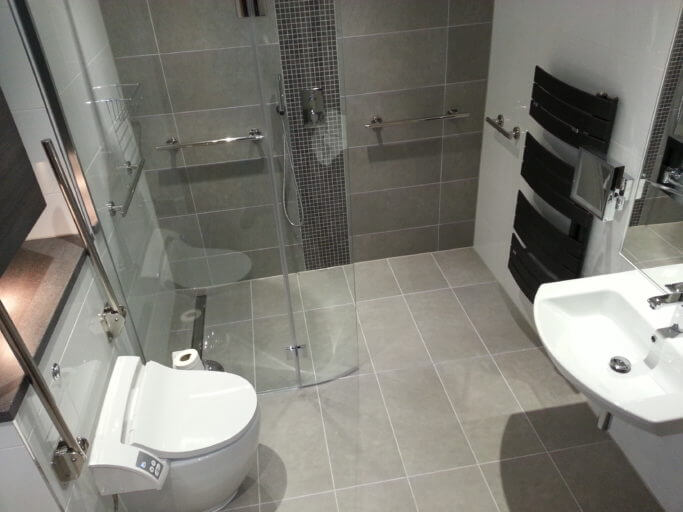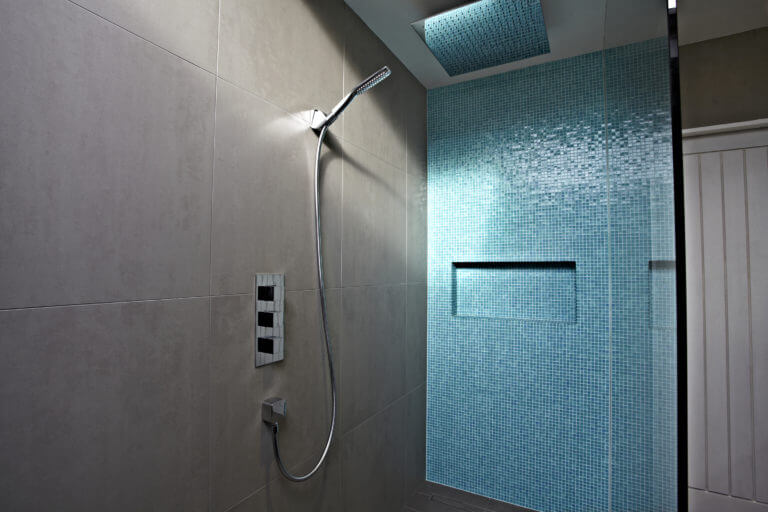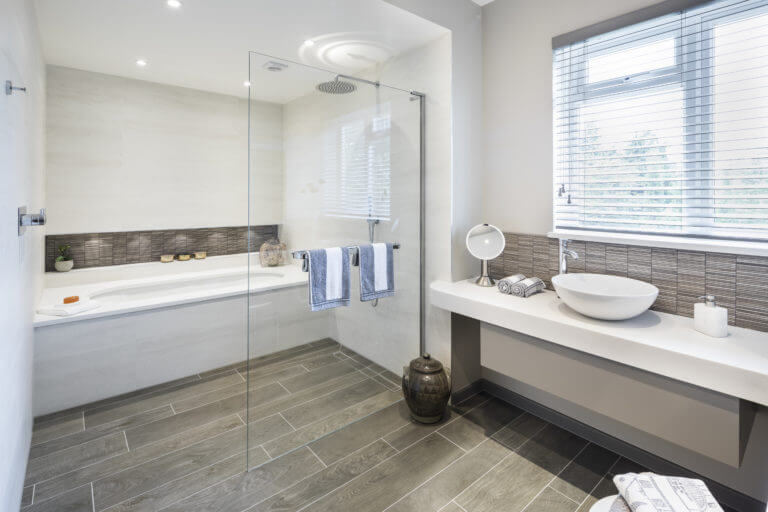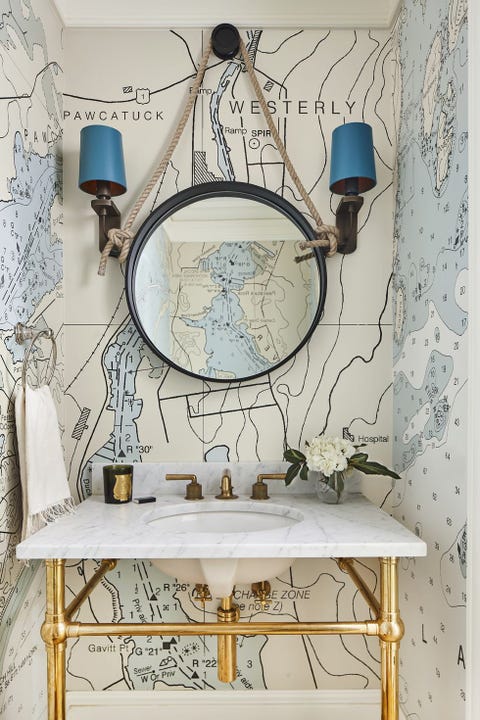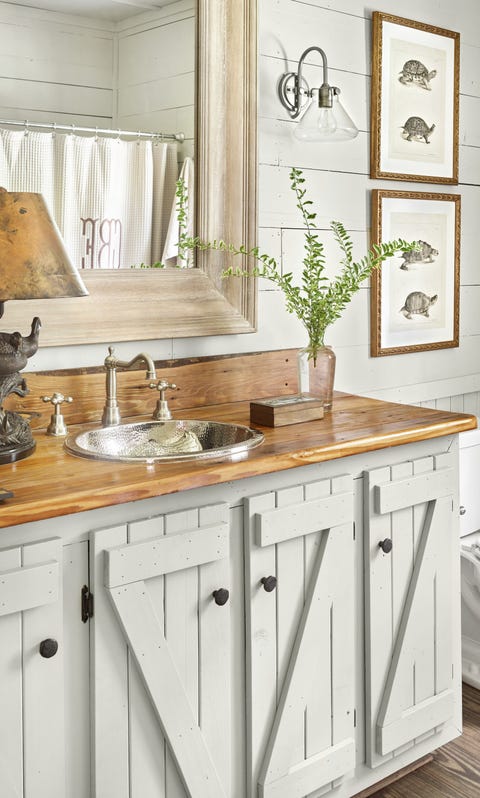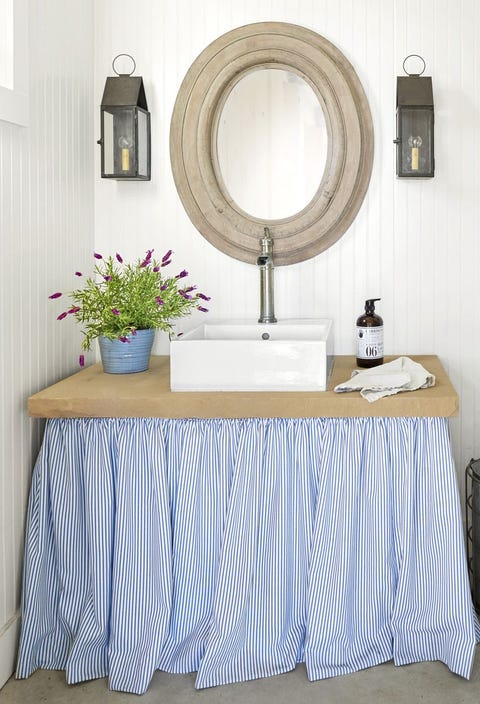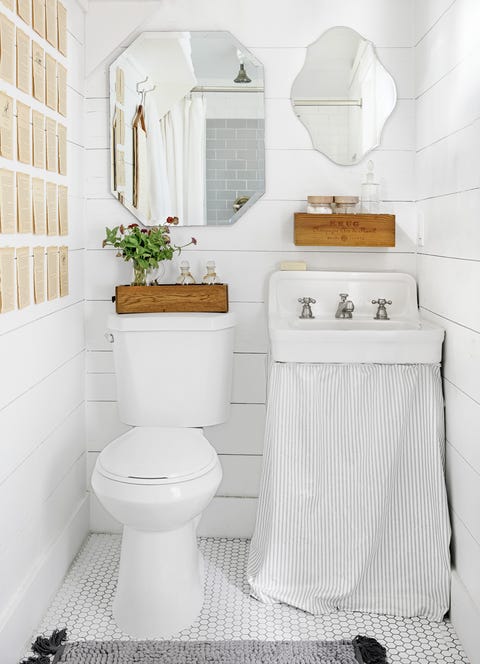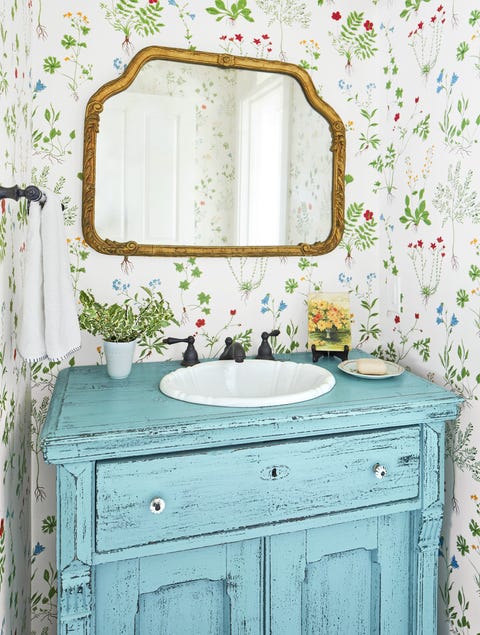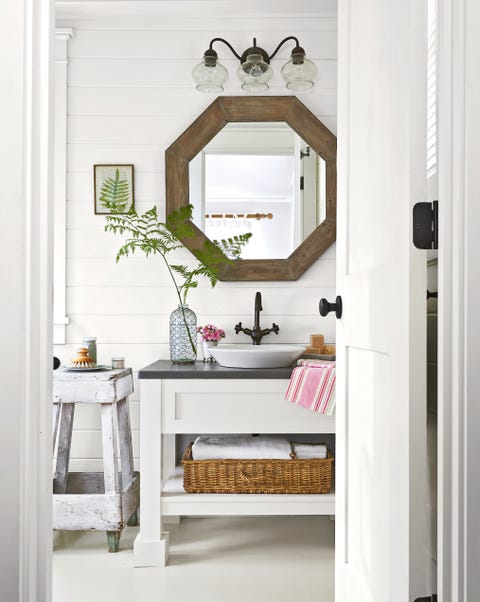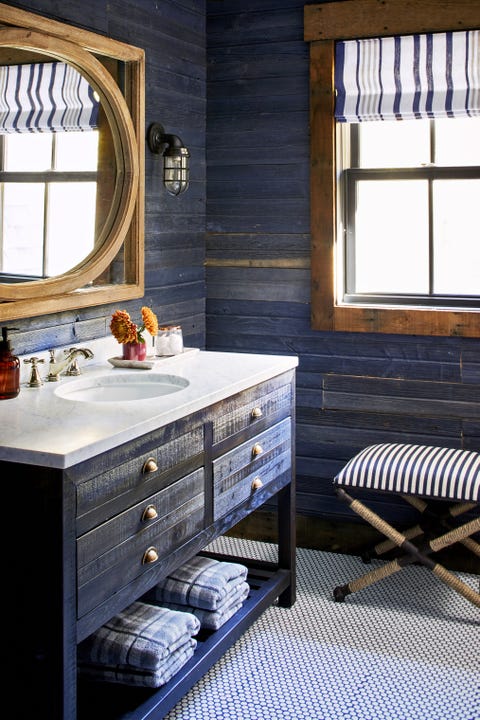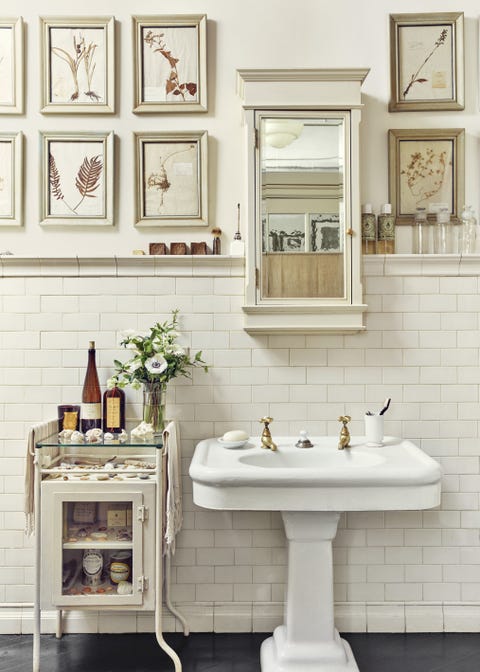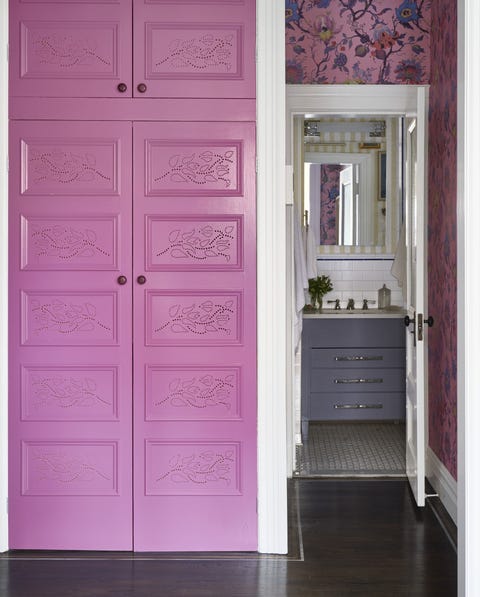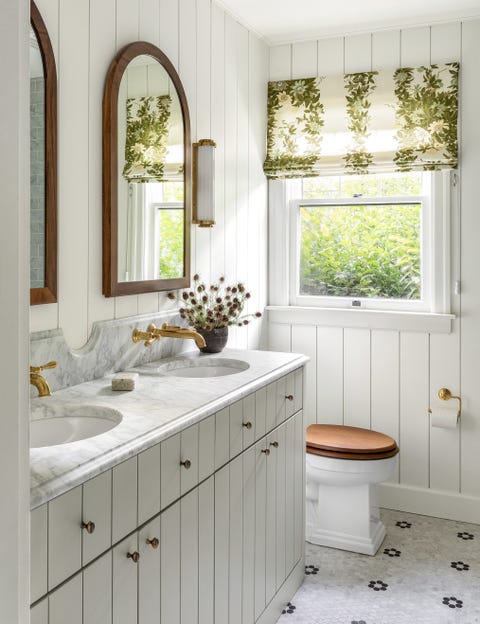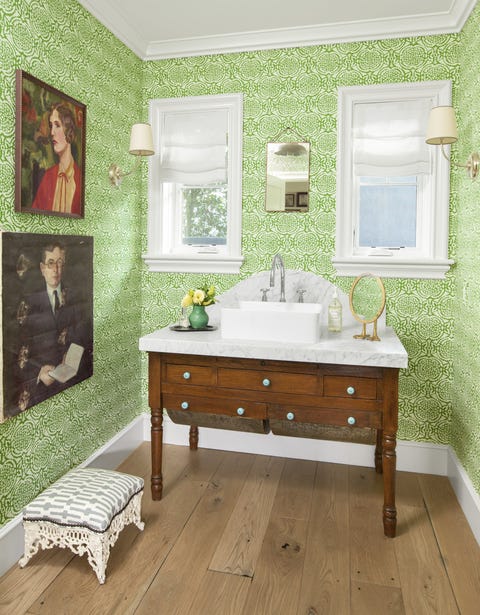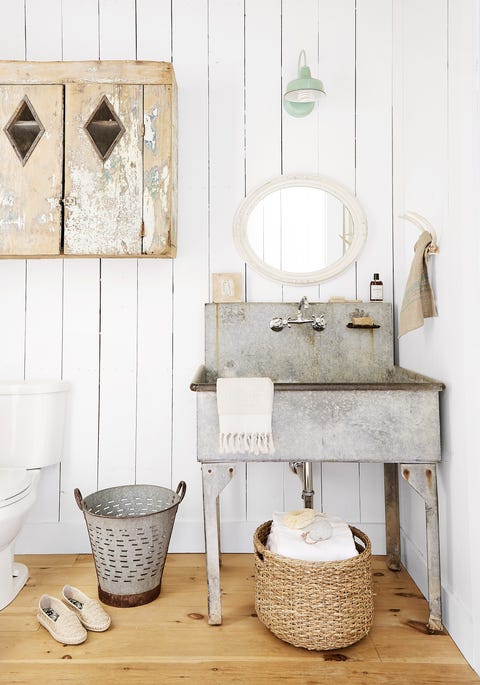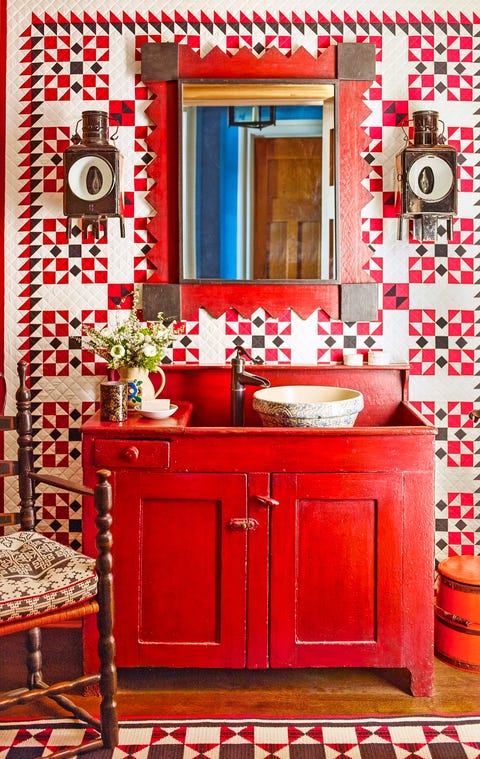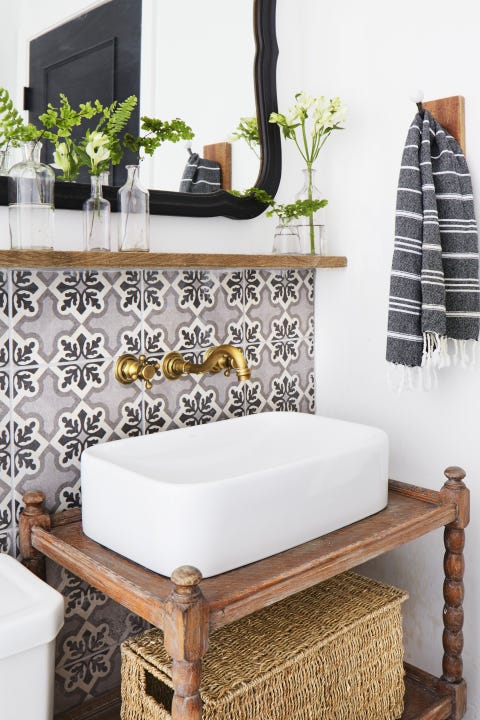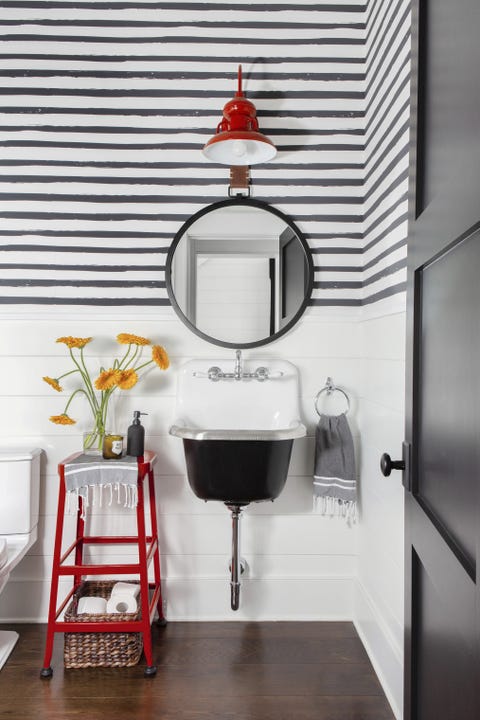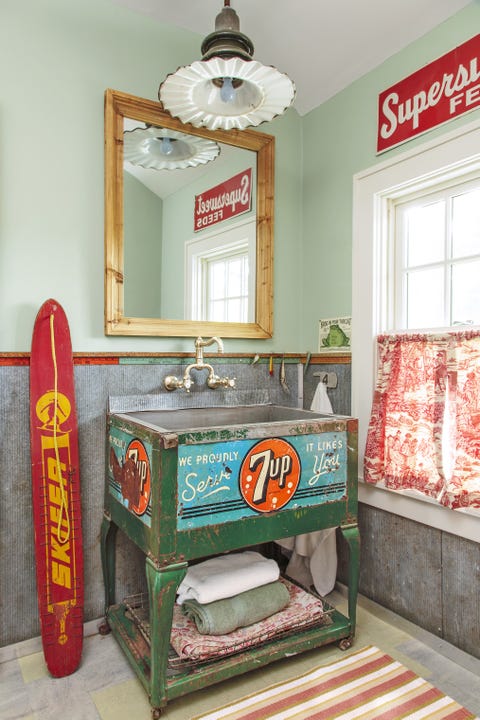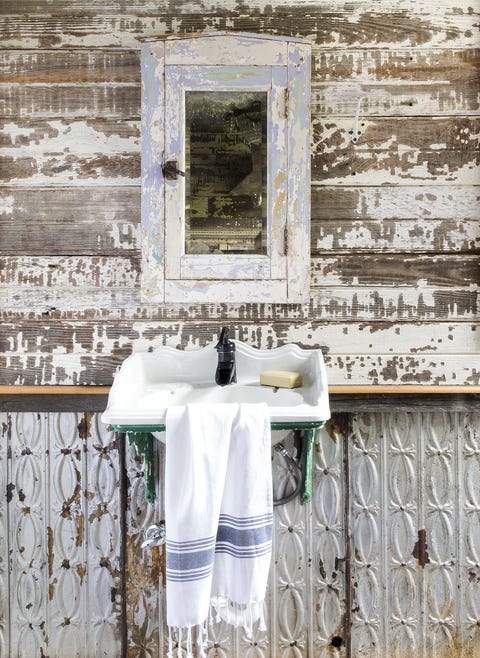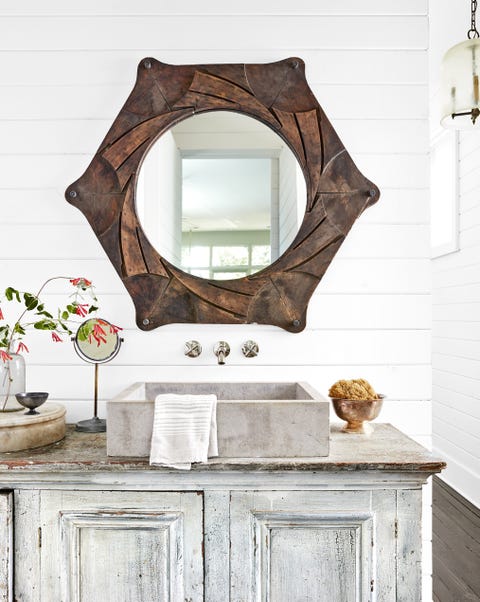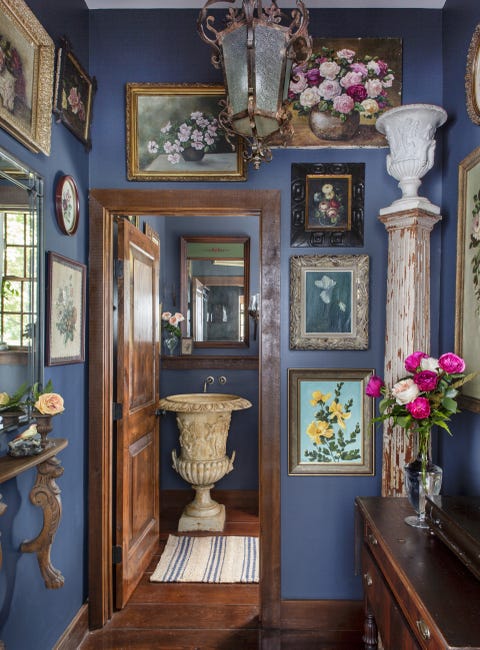When it comes to turning your home into a safe environment to age in place, special consideration should be given to bathrooms.
Entering and exiting a slippery shower, standing or sitting in a bathtub, even washing up after a toilet break can all pose serious risks of injury for those over the age of 65. According to the Centers for Disease Control and Prevention, more than three million older Americans are taken to the emergency room every year for injuries from falls, 80 percent of which take place in bathrooms.
Bathroom grab bars are installed in every one of my aging-in-place bathroom remodels.
Safety grab bars in aging-in-place bathrooms are so important that I won't renovate a bathroom without adding at least one. The keys are putting grab bars in the right places around the bathroom and making sure they are installed correctly.
Grab bars are a top aging-in-place priority. In this Ultimate Guide to Bathroom Safety Bars for Aging in Place, I'll help you make your bathroom as safe as possible by covering everything you need to know about safety grab bars. We'll discuss:
- Types of safety bars
- Places to install safety bars
- Suction cups vs. fixed safety bars
- Material types and features
- Installation Tips
Types of Safety Bars
Safety bars and grab bars help people maneuver around the bathroom safely. A slippery floor or wet tub increases the risk of falling, but a properly installed and conveniently located safety bar can save you from serious injury or even death.
While safety is the No. 1 concern when it comes to bathroom home modifications, those wishing to age in place don't have to sacrifice aesthetics for the utility of staying upright. Not only are there are a wide variety of safety bar types, finishes, and designs, they're also available in permanently affixed or suction-cup styles to accommodate different needs.
Permanently installed safety bars are anchored to the wall and should meet the grab bar requirements laid out by the Americans with Disabilities Act. Installed bars are meant to bear someone's full weight, while suction cup bars are intended to just provide assistance with balance.
Straight Safety Bars
The most basic grab bar—straight bars—come in various lengths, materials, finishes and colors. As its name suggests, this type of grab bar is straight and can be installed anywhere in the bathroom. As long as it is installed directly into the wall, it offers excellent support, making it ideal for those with stability issues. Straight suction cup grab bars can also provide stability, but they are not meant to prevent a fall from happening or to serve as a pull bar after a fall. Suction cup grab bars are ideal for those who live in a condo or apartment where fixed installation isn't an option.
Recommended Safety Bars for Aging in Place:
 Franklin Brass Grab Bar
Franklin Brass Grab Bar
This is a heavy-duty 32-inch long grab bar, longer than more common bars.
 Sumnacon Anti-Slip Grip Grab Bar
Sumnacon Anti-Slip Grip Grab Bar
This shorter grab bar has an anti-slip grip. It's perfect for placing vertically outside of a shower or tub for a hand when you're getting in and out.
Two-in-One Safety Bars
These safety bars offer stability support, but also serve other functional purposes, such as holding hand-towels or providing shelf space for soap or extra toilet paper. These combo units can be installed in locations where falls are more likely, but also where someone would naturally go to dry their hands or grab a facial tissue.
Recommended Two-in-One Safety Bar for Aging in Place:
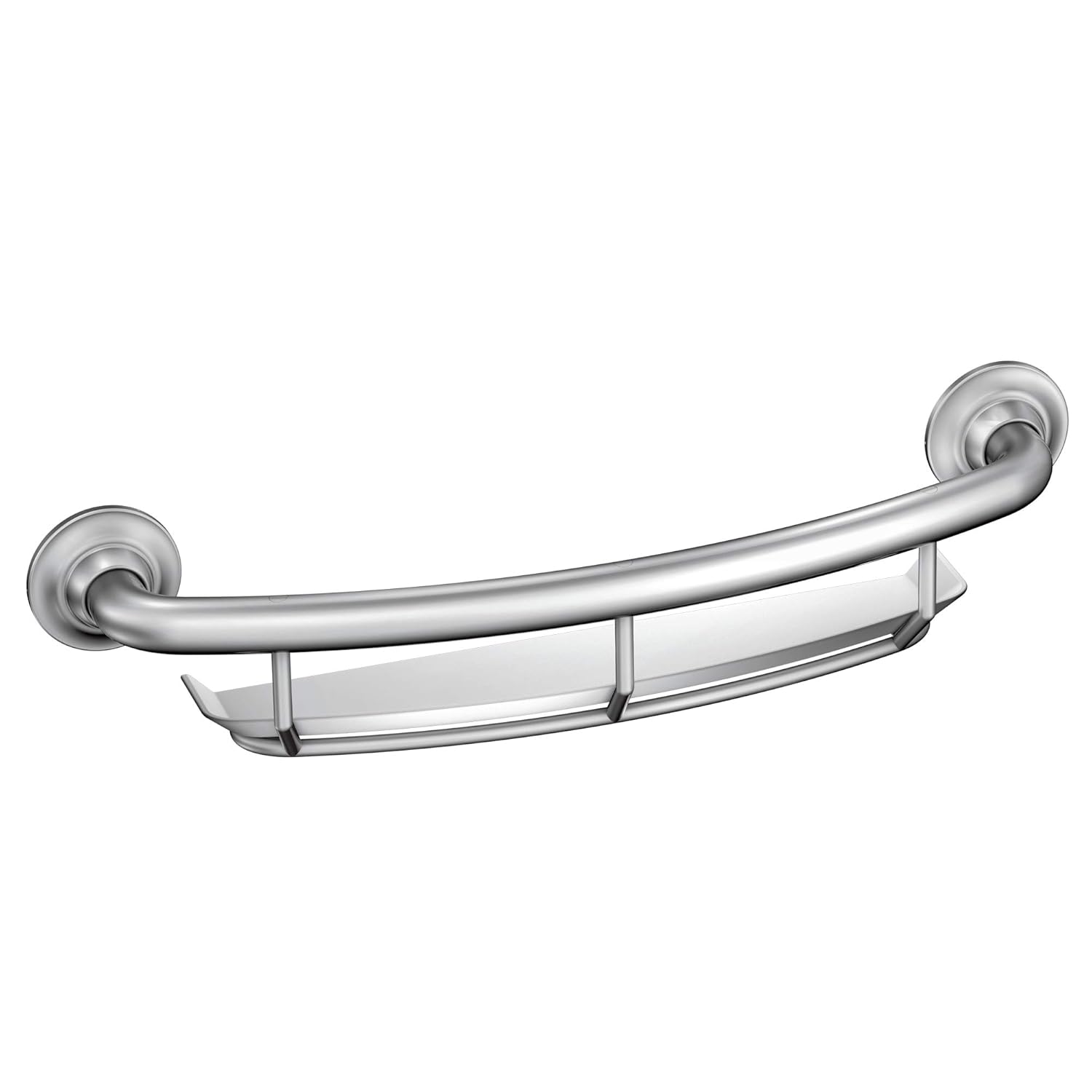 Moen Built-in Shelf Shower Safety Bar
Moen Built-in Shelf Shower Safety Bar
This grab bar doubles as a shower caddy to hold shampoo and soap. It's right at arm level should you need it.
Wave and Curve Safety Bars
For those looking for the strength, stability, and safety of a straight grab bar without the institutional feel, wave and curve safety bars may be the answer. A variation of the straight safety bar, wave and curve safety bars feature a sleek design alternative that includes a slight curve or wave and are ADA compliant when properly mounted.
Recommended Wave and Curve Safety Bar for Aging in Place:
 CSI Wave-Shaped Grab Bar
CSI Wave-Shaped Grab Bar
The shape of this grab bar with its rubbed bronze finish will make it double as a design element in your bathroom.
Corner Safety Bars
Corner grab bars are one continuous bar that provides safety protection when entering a corner or going around a corner. Corner bars also include angled bars and 90-degree angle bars, which are ideal for those who need both vertical and horizontal stability. These types of grab bars are also perfect for bathrooms that have an uneven wall surface but require contiguous stability.
Recommended Corner Safety Bar for Aging in Place:
 Moen L-Shaped Grab Bar
Moen L-Shaped Grab Bar
This long corner grab bar from Moen is solid and sturdy, supporting up to 500-lbs.
 Moen Angled Grab Bar
Moen Angled Grab Bar
Moen's angled grab bar is a great option for placing along the toilet or inside the tub for added support when standing up.
Floor-to-Ceiling Poles
Ideal for any room, adjustable height, floor-to-ceiling poles are especially effective for large bathrooms with open space. Because they use jackscrews to leverage tension, most floor-to-ceiling poles require ceilings and floors to be flat and level to remain stable and secure.
Recommended Floor-to-Ceiling Safety Pole for Aging in Place:
 Stander Floor-to-Ceiling Grab Bar
Stander Floor-to-Ceiling Grab Bar
This pole includes two points of contact along the ceiling and a curved section to make transitioning from sitting to standing easier for older adults.
Moveable Safety Bars
Moveable grab bars are hinged to the wall and may be positioned out of the way when not in use. They come in a variety of styles, and different options include swing-away bars that can be situated against the wall when not in use or flip-up or fold-down bars that can be hidden away for use only when needed. These types of bars are ideal for toilet areas where no adjacent wall exists or for multi-generational homes where stability fixtures are not required for every resident. When installed properly, moveable safety bars are just as ADA compliant as wall-mounted solutions.
Recommended Moveable Safety Bar for Aging in Place:
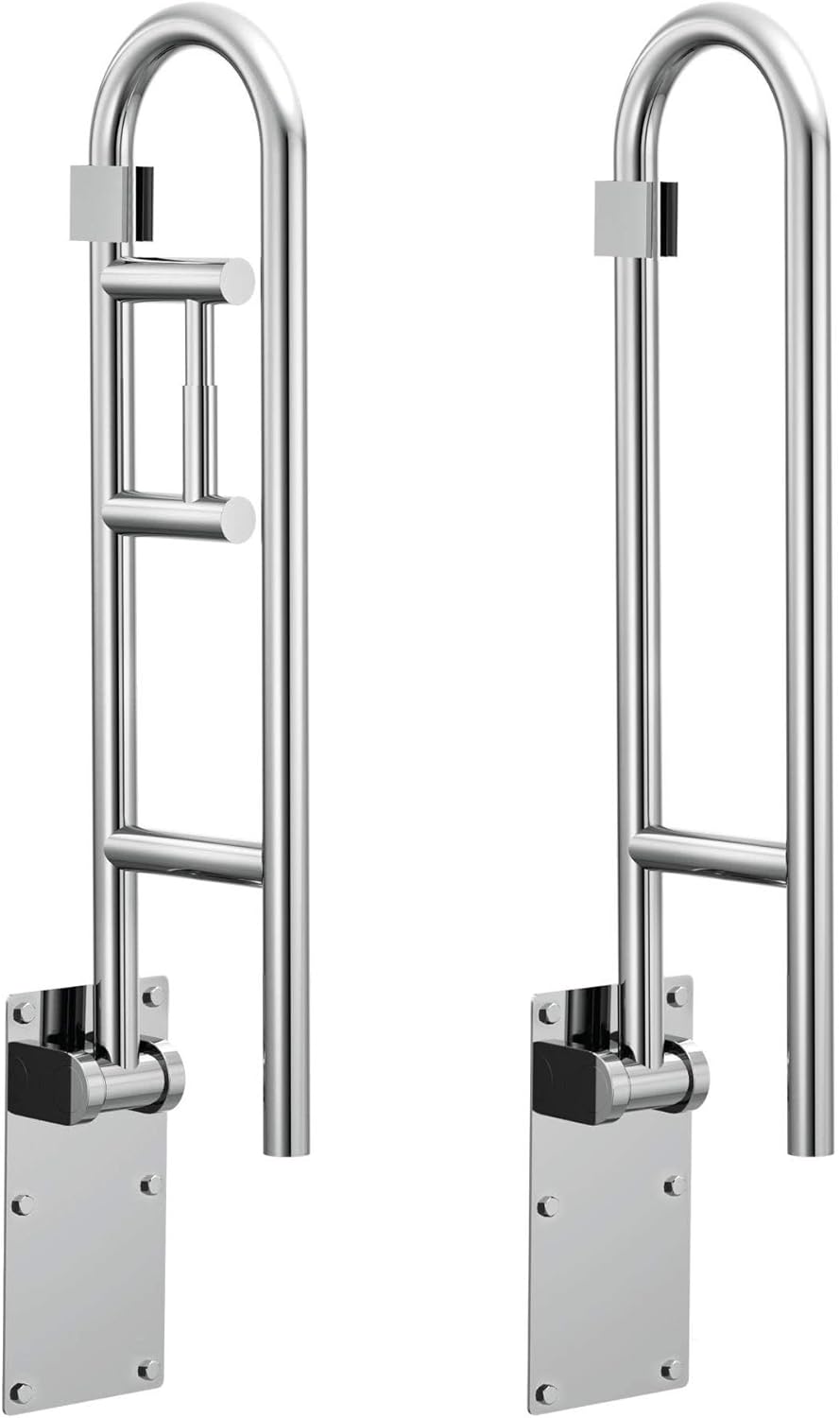 Moen Flip Up Grab Bar Set
Moen Flip Up Grab Bar Set
This grab bar set is perfect to place on either side of the toilet with one side featuring a toilet paper holder for added convenience.
Bathtub Safety Handles
Bathtub safety handles clamp onto the edge of the tub for support getting in and out. While they are extremely versatile due to their adjustable height and single or multiple grasp areas, they are typicallynot suitable for fiberglass tubs.
Recommended Bathtub Safety Handle for Aging in Place:
 Moen Tub Grip
Moen Tub Grip
This sturdy dual tub grip has textured handles so gripping is easy even when the bar is wet.
Before You Begin
A Note About Installing Grab Bars in Fiberglass Tubs and Showers
Molded fiberglass tubs and showers are usually made of thinner and less supportive material and tend to have varying widths, spaces, and gaps due to their uneven surface designs. Attaching grab bars or safety handles directly to fiberglass is not recommended because the material is not typically strong enough to secure the weight of someone using the bar or handle in the event of a fall.
When installing grab bars or handles, most contractors will opt to modify an existing fiberglass tub or shower so they can secure the fixtures to a stud or mounting point behind it. While some fiberglass units contain reinforced material designed to handle the installation of safety fixtures, unless it is specifically labeled as meeting the appropriate ANSI load requirements, it is best to find a more stable mounting alternative.
A Note About Drilling into Ceramic Tile
Sometimes it's necessary to drill into or through ceramic tile to properly mount and secure a safety bar or grab bar. Ceramic tile in showers or above tubs cannot be drilled with regular bits. To bore holes for screw clearance, a masonry bit is required. While they are used just like regular bits, masonry bits have carbide tips that allow them to grind through masonry materials like ceramic tile without cracking them.
Where to Install Safety Bars in the Bathroom
You'll want to approach your safety bar installation from two perspectives. The first is identifying the ideal places in the bathroom to install grab bars and the next is understanding what's required from a building code perspective.
Here is some additional information to consider when it comes to bathroom danger zones:
Commode Area
Because commode areas differ from home to home—and even from room to room—there is no universal safety solution when it comes to safety bars or handrails. Some commode areas have no adjacent walls and will require a swing-away or flip safety bar unit. Other commode areas are more conducive to traditional bars. For ideal conditions, where a wall is adjacent to the toilet:
- Install along horizontal safety bar about five to six inches above the toilet seat on the nearest wall. The grab bar should measure 32 inches or longer and extend 12-plus inches past the front of the toilet, providing plenty of bar support for lowering and raising.
- Position a second vertical safety barperpendicular to the far end of the horizontal grab bar and extending about 16-plus inches above it. This will ensure stability when standing.
Showers and Tubs
You should never have to stretch to get from one grab bar to another. Whether you have a full bathtub or a stall shower, follow these guidelines when installing safety bars.
Shower/Tub Combos
When it comes to safety bars in shower and bathtub combinations, there should always be a bar within reach.
- Install avertical entrance bar on the wall opposite of the faucet wall (typically to the rear of the shower or tub).
- Install a secondvertical grab bar on the faucet wall.
- Install a longhorizontal safety bar (or even two bars) to the side wall to ensure you'll have a bar to grab onto anywhere in the tub. This will also assist you when stepping into and out of the tub. Position the top horizontal grab bar about 36 inches from the floor of the tub. If you're including a second safety bar, install it about six inches below the top bar.
- Consider installing a bathtub safety handle that slides over the side of the tub and is held in place with a clamp. This is helpful whether you're taking a bath or a shower and if you need extra support and security when stepping into and out of the tub. Another option is a tub safety grip bar.
Additional Tub Safety Grip Product Suggestions:
 Moen Home Care Tub Grip
Moen Home Care Tub Grip
Its large suction pads clamp on tightly. Its handle is ergonomic with great anti-slip properties.
Moen Home Care Tub Safety Bar
 This tub safety bar is a different take on tub safety and gives even more area to hold onto when getting safely into the bathtub.
This tub safety bar is a different take on tub safety and gives even more area to hold onto when getting safely into the bathtub.
Stall Showers
Stall showers (which contains only a shower and no tub) may be easier to enter and exit, but they are still dangerous for those with stability issues. There should always be a means of support for entering and exiting a stall shower, as well as for the duration of the shower. To ensure your safety:
- Install avertical safety bar inside both of the shower door jambs. The vertical grab bar helps you stay steady going from the bathroom floor to the shower floor and eases the transition when its necessary to step up and over the lip of the shower threshold.
- Inside the shower, two or more grab bars are recommended:
- Install at least one horizontal safety bar on the side wall. You should be able to hold onto the entry bar, then easily reach the horizontal bar inside the shower.
- Install a vertical safety bar next to the faucet handles, so you can adjust water temperature, the showerhead, and water flow without losing your balance.
A Few Notes About Grab Bar Positioning
The Angle
How a grab bar is installed-whether horizontally or vertically—has a lot to do with how it will be used and the specific needs of the person using it. Each option has its pros and cons. For example,vertical safety bars are easier to grip for those with arthritis but provide less wall coverage.Horizontal safety bars may be more uncomfortable for those with tender or swollen joints, but they make it easier to move up and down from a wheelchair, toilet, or tub.
Diagonally positioned grab bars would seem to be the answer—they provide more coverage area, they're not as painful to grip for those with osteo or rheumatoid conditions, and they can accommodate different heights. However, diagonally positioned safety bars can make it easier for your hand to slip when gripping the bar, and, depending on the angle, it may not provide the same leverage for sitting and standing. The proper angle for a diagonally situated handrail is 45 degrees, and we recommend a minimum length of 24 inches.
The Clearance
In addition to the angle of the grab bars, you'll want to make sure they are free from any obstructions and have enough clearance to provide effective support once they're installed. This seems obvious, but it often goes overlooked.
Fixed-mount support bars should be installed only after proper measurements have been taken and the final layout of your bathroom has been determined. They'll need to be clear of wall-mounted shelves and faucets, as well as shower, tub, and sink handles. Other fixtures, such as paper dispensers and mirrors should be a safe distance from the safety bars, as should free-standing protrusions, such as hampers and shelving units.
Suction Cups vs. Fixed Safety Bars
Most safety bars are affixed to bathroom walls with suction cups or permanent mounting fixtures. While safety bars that clip to the side of the tub basin are helpful, they should not be used as your only source of stability protection. That leaves fixed-mount grab bars or safety bars with suction cups as the only truly safe alternatives.
So, which choice is right for your bathroom? This can depend on a variety of factors. As previously mentioned, suction cups may be the only viable option if there are restrictions on the modifications that can be made to the bathroom. Other factors might be the level of need. If you need to place all your weight on the bars, fixed-mount bars are probably best. If you only need them for balance and aren't worried about falling, suction-cup grab bars might be the quicker and more convenient solution.
While aesthetics is of course important, it shouldn't take priority over need. Decide what level of support you're going to need now and in the future, and let that determine your decision-making. Take aesthetics into consideration only after you've decided which option is best for your safety.
Advantages of Suction-Cup Safety Bars
- Easier for Do-It-Yourselfers (DIYers): As long as you do not have health limitations that prevent you from properly positioning the bars into place, suction-cup safety bars are simple to install.
- Adjustable and removable: If you don't like the placement or your needs change over time, suction-cup safety bars are easily adjusted and removed.
- Compact and portable: Most suction-cup safety bars can be easily packed and placed in some (though not all) hotel bathrooms while you travel.
- Cost: Most suction-cup grab bars are cheaper than their fixed-mount alternatives and may not require you to hire a contractor.
Disadvantages of Suction Cup Safety Bars
- Surface limitations: For the most part, suction-cup grab bars are only suitable on nonporous and flat surfaces. They cannot be used over grout lines, on small tiles, or on textured or porous tile. They should never be used on drywall.
- Not as secure for bearing weight: Before purchasing, check websites and packaging for disclaimers. If the purpose is to fully bear all your weight on a safety bar, suction-cup bars are not typically the best choice.
- Require frequent inspection: You should check the stability of your suction-cup bars before every use to ensure they are safely secured and sturdy enough to help you maintain stability. Over time, their suction will weaken, and they'll need to be replaced.
- Fewer options: While there are plenty of aesthetically pleasing suction-cup safety bars, they typically don't offer as many material types, varieties, or styles.
Advantages of Fixed Safety Bars
- Strength and durability: Fixed-mount safety bars are meant for body leveraging as well as balance assistance. This is an extremely important factor to keep in mind for both your immediate and future needs.
- More options: Fixed-mount grab bars offer more styles, shapes and materials than suction-cup bars also come in acrylic and metal with a wide variety of colors and finishes to choose from
- More functionality: Fixed-mount safety bars can be installed contiguously in or around corners, they can flip up or down or swing away for when they're not needed, and they can serve other purposes, such as shelving for toiletries or holders for towels. Suction-cup grab bars are not as versatile.
Disadvantages of Fixed Safety Bars
- More difficult for DIYers: For the best and safest installation, fixed-mount safety bars require more advanced skills when it comes to home modifications.
- Not adjustable or removable: Once they are installed, fixed-mount safety bars cannot be adjusted or removed without additional drilling and patching. For this reason, some people opt to use a suction-cup safety bars temporarily before permanently installing a fixed-mount grab bar.
- Cost: Fixed-mount safety bars tend to be more expensive due to higher quality material and professional installation costs.
Safety Bar Materials and Features
When it comes to bathroom safety for aging in place, aesthetics matter, but not as much as functionality. Once you've identified your needs and the features your safety requires, you can start looking for the color, style, and material that matches your décor.
Look for these features in bathroom safety bars:
- Slip resistance
- Textured handles for better grip
- Corrosion resistance
- Minimum diameter of at least 32-38 mm
- Weight load of 300-500 pounds
Safety bars come in a variety of materials, colors, and styles, but they may not be available for every type. Common varieties include:
- Solid 304 stainless steel (will not rust)
- Stainless finish
- Acrylic
- Nylon
- Powder-coated stainless steel
Professional Installation or Do It Yourself?
Bathroom safety bars play an extremely important role in the aging-in-place home—keeping you safe. Wet showers and slippery floors present significant fall hazards for even the most well-balanced and steady homeowner. Making sure your grab bars are installed properly is of paramount importance, regardless of whether you choose suction-cup styles or fixed-mounted ones.
Before making a final decision on location, type, material, or position, a good piece of advice is to reach out to a Certified Aging in Place Specialist (CAPS) contractor to gather some information about what's best for your unique situation. CAPS contractors can help in other ways, too.
A CAPS contractor can:
- Purchase safety bars, poles, and mounting equipment directly from trusted manufacturers, saving you money
- Provide worry free installation, giving you the peace of mind of having stable, dependable bathroom grab bars that are always within reach
- Return to remove, adjust, or replace a safety bar, taking care to minimize the impact the modifications have on your bathroom walls
- Provide advice and guidance about other safety hazards you may have in your home outside of the bathroom.
As a general rule, you should be wary of undertaking any projects that could lower your property value or result in serious injury. While installing suction-cup handrails may not pose much of a danger in either scenario, using improperly installed safety bars could result in injury or even death.
The same holds true for fixed-mount safety bars; if not properly installed, using them can be dangerous. Likewise, fixed-mount bars can be complicated to install, require special equipment, and could result in significant damage to your bathroom if the installation is not carried out correctly.
In both cases, consulting a CAPS contractor is your best bet. Even if you choose to install the bars yourself, at least you'll have a professional's opinion about where to locate the bars and what is best for your particular situation.
You have a ton of choices when it comes to bathroom safety bars. As you continue to do your research to determine the right safety bars for your aging-in-place bathroom, send me any questions you have using the comments section below. I'm here to help guide you through the process.
Good luck with your next aging-in-place remodel!

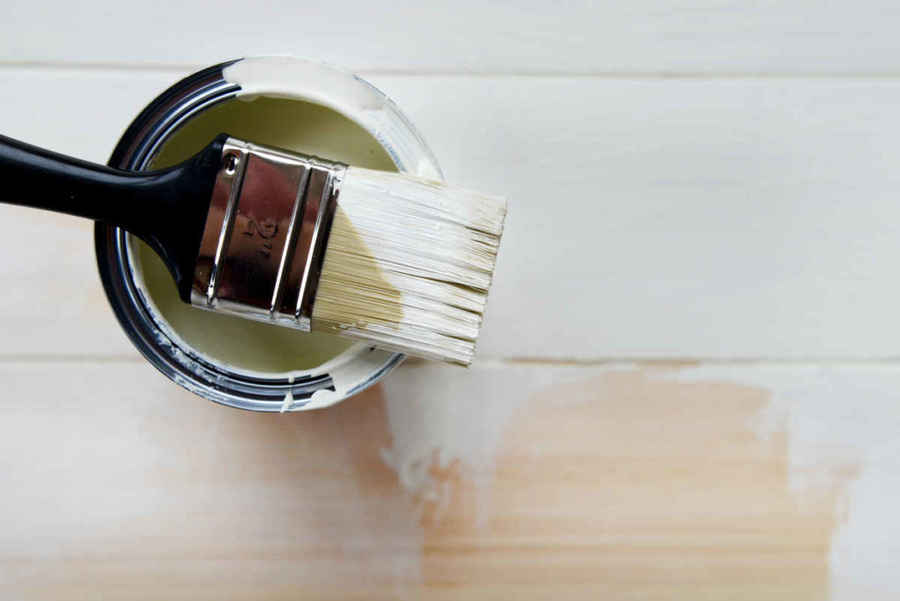

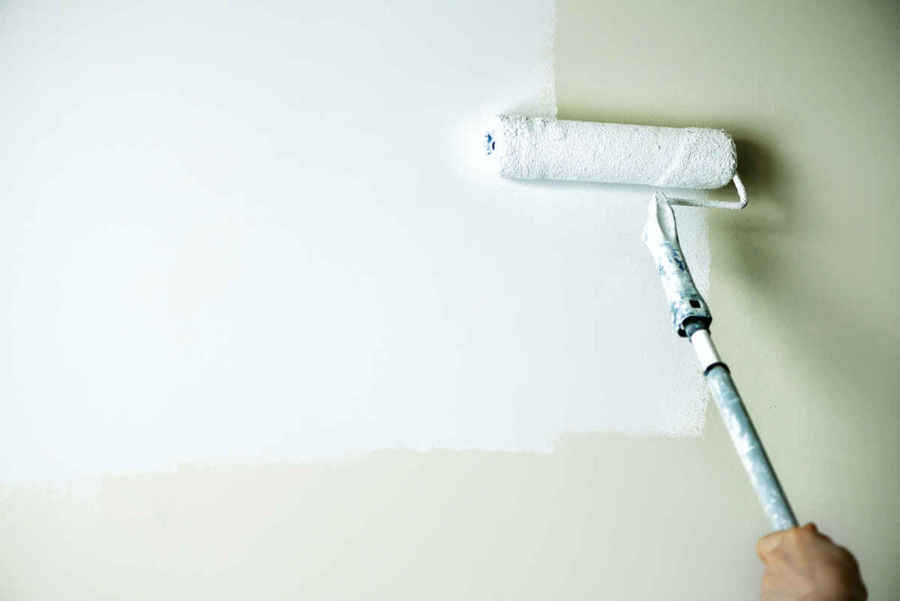

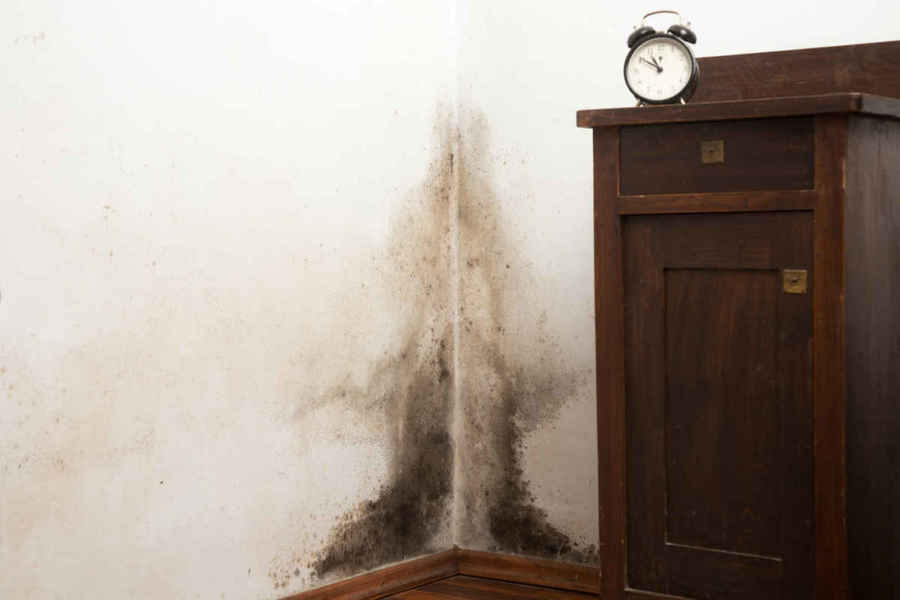
 Sumnacon Anti-Slip Grip Grab Bar
Sumnacon Anti-Slip Grip Grab Bar Moen Built-in Shelf Shower Safety Bar
Moen Built-in Shelf Shower Safety Bar CSI Wave-Shaped Grab Bar
CSI Wave-Shaped Grab Bar Moen L-Shaped Grab Bar
Moen L-Shaped Grab Bar Moen Angled Grab Bar
Moen Angled Grab Bar Stander Floor-to-Ceiling Grab Bar
Stander Floor-to-Ceiling Grab Bar Moen Flip Up Grab Bar Set
Moen Flip Up Grab Bar Set Moen Tub Grip
Moen Tub Grip Moen Home Care Tub Grip
Moen Home Care Tub Grip This tub safety bar is a different take on tub safety and gives even more area to hold onto when getting safely into the bathtub.
This tub safety bar is a different take on tub safety and gives even more area to hold onto when getting safely into the bathtub.